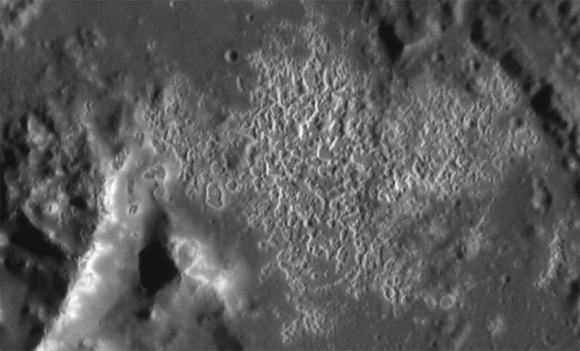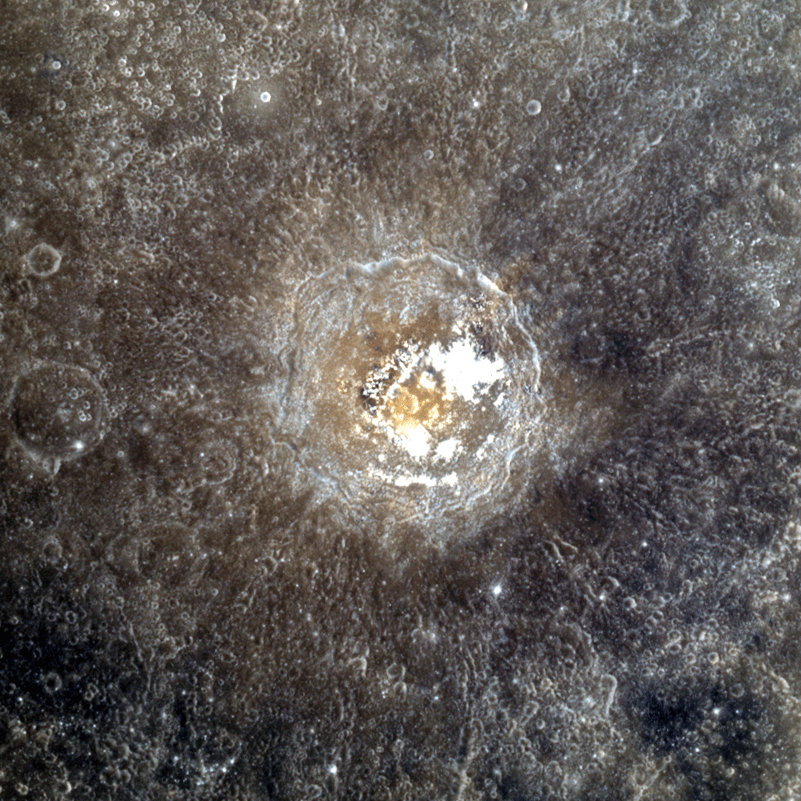At first glance, the planet Mercury may bear a striking resemblance to our own Moon. True, both are heavily-cratered, airless worlds that hide pockets of ice inside polar shadows… but there the similarities end. In addition to being compositionally different than the Moon, Mercury also has surface features that you won’t find on the lunar surface — or anywhere else in the Solar System.
The picture above, part of an 11-color targeted image acquired by MESSENGER on April 25, 2013, shows the varied terrain found within the 97-kilometer-wide Tyagaraja crater located near Mercury’s equator. The reds, blues, greens, and oranges, much more saturated than anything we’d see with our own eyes, correspond to surface materials of different compositions… and the brightest spots within the crater are features called “hollows” that are truly unique to Mercury, possibly resulting from the planet’s close interaction with the solar wind.
First noted in September of 2011, hollows have been identified across many areas of Mercury. One hypothesis is that they’re formed by the sublimation of subsurface material exposed inside larger craters. Being so close to the Sun and lacking a protective atmosphere, Mercury is constantly being scoured by the solar wind — a relentless stream of charged particles that’s actively “sandblasting” exposed volatiles from the planet’s surface!

The reddish spot at the center of the crater in the top image is likely material surrounding a pyroclastic vent, which appear red and orange in MDIS images. The dark material that appears bluish is something called “low reflectance material” (LRM).
The image was acquired as a targeted high-resolution 11-color image set. Acquiring 11-color targets is a new MESSENGER campaign that began in March and utilizes all of the Wide-Angle Camera’s 11 narrow-band color filters. Because of the large data volume involved, only features of special scientific interest are targeted for imaging in all 11 colors.
Full of geologically interesting features the crater was named for Kakarla Tyagabrahmam, an 18th century composer of classical South Indian music.
The first spacecraft to establish orbit around Mercury in summer 2011, MESSENGER is capable of continuing orbital operations until early 2015.
Read more on the Johns Hopkins University APL MESSENGER site here.
Credits: NASA/Johns Hopkins University Applied Physics Laboratory/Carnegie Institution of Washington


?????? ???????????? is the Man!
Go Messenger! Often overlooked, this mission is key to our understanding planetary formation and evolution in our solar system. Am expecting mind blowing results from this small spacecraft albeit so far from Om and so close to my Sol!